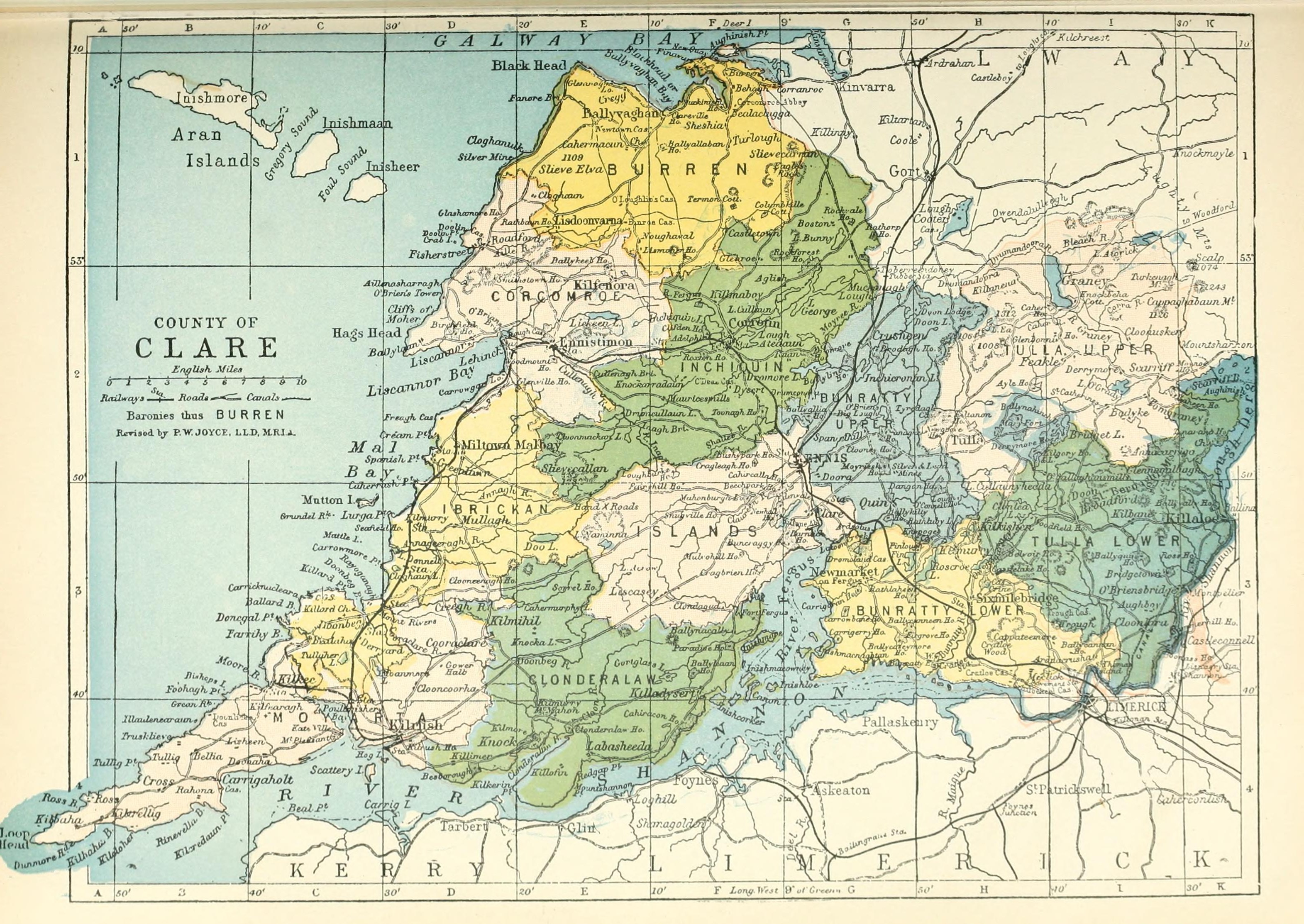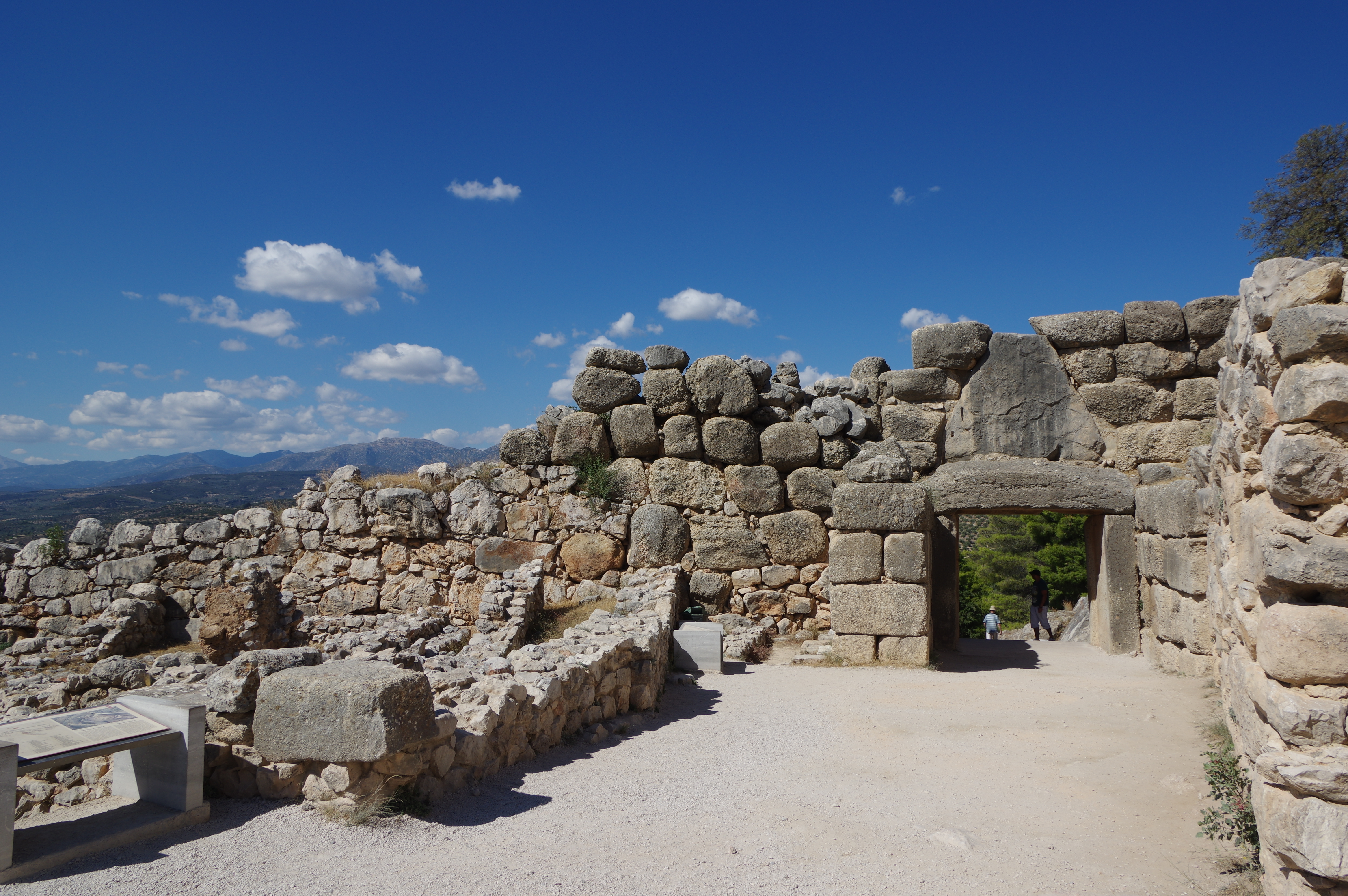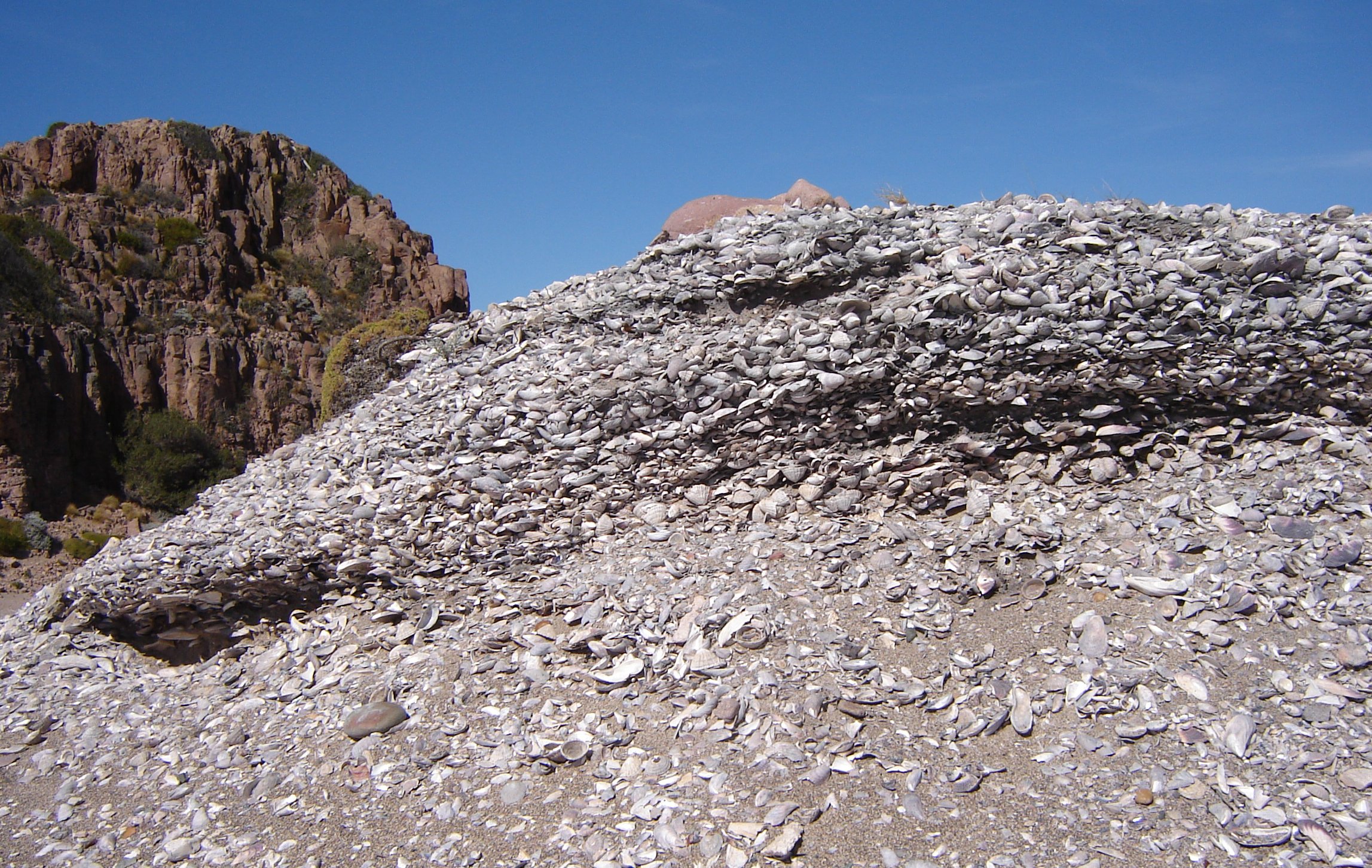|
Oughtmama
Oughtmama ( ga, Ucht Máma) is a civil parish in County Clare. It lies in the Burren, a region in the northwest of the county. It contains many antiquities, including three early-medieval Christian churches, ruined castles, prehistoric cairns and ring forts and two Martello Towers built in the early 19th century. Geography Location The parish is in the extreme north of the Barony of Burren, and the county of Clare. The parish is and covers . The parish holds Lough Murree, a lake of . It has two headlands that extend into Galway Bay, Aughinish Point and Finavarra Point. Description The land is mostly low-lying, rising to Abbey Hill in the east at above sea level, although large parts of Abbey Hill are actually located in neighbouring Abbey parish which completely surrounds the Oughtmama parish townland of Behagh. Oughtmama parish also includes part of Turlough Hill and Slieve Carran, the latter rising to over 1,000 feet above sea level. The parish is not continuous, but co ... [...More Info...] [...Related Items...] OR: [Wikipedia] [Google] [Baidu] |
The Burren
The Burren (; ) is a karst/glaciokarst landscape centred in County Clare, on the west coast of Ireland. Burren National Park - Geology - "The Burren is one of the finest examples of a Glacio-Karst landscape in the world. At least two glacial advances are known in the Burren area." It measures around , within the circle made by the villages of , Corofin, and . [...More Info...] [...Related Items...] OR: [Wikipedia] [Google] [Baidu] |
Aughinish, County Clare
Aughinish (sometimes written as Aughnish) (''Eachinis'' in Irish) is a small island and townland located in Oughtmama Parish of the Barony of Burren in north County Clare, in Ireland on the south shore of Galway Bay. By road it is northwest of Kinvarra. The island is approximately two miles (3 km) wide and a mile (1.6 km) from the northernmost tip to the southernmost point and has approximately fifty inhabitants. The island was originally connected to County Clare, but that connection was lost due to the tsunami generated by the massive 1755 Lisbon earthquake. p. 634 The built the existing [...More Info...] [...Related Items...] OR: [Wikipedia] [Google] [Baidu] |
Burren (barony)
The Barony of Burren is a geographical division of County Clare, Ireland, that in turn is divided into civil parishes. It covers a large part of the Burren. Legal context Baronies were created after the Norman invasion of Ireland as divisions of counties and were used the administration of justice and the raising of revenue. While baronies continue to be officially defined units, they have been administratively obsolete since 1898. However, they continue to be used in land registration and in specification, such as in planning permissions. In many cases, a barony corresponds to an earlier Gaelic túath which had submitted to the Crown. Landscape The Parliamentary Gazetteer of Ireland 1845 describes the barony as follows: History The district was once called Cean-gan, which means "the external promontory". Ptolemy wrote this name as Gan-ganii. Later it was called Hy-Loch-Lean, which means "the district on the waters of the sea". The present name of Burren means a distant pa ... [...More Info...] [...Related Items...] OR: [Wikipedia] [Google] [Baidu] |
Cyclopean Masonry
Cyclopean masonry is a type of stonework found in Mycenaean architecture, built with massive limestone boulders, roughly fitted together with minimal clearance between adjacent stones and with clay mortar or no use of mortar. The boulders typically seem unworked, but some may have been worked roughly with a hammer and the gaps between boulders filled in with smaller chunks of limestone. The most famous examples of Cyclopean masonry are found in the walls of Mycenae and Tiryns, and the style is characteristic of Mycenaean fortifications. Similar styles of stonework are found in other cultures and the term has come to be used to describe typical stonework of this sort, such as the old city walls of Rajgir. The term comes from the belief of classical Greeks that only the mythical Cyclopes had the strength to move the enormous boulders that made up the walls of Mycenae and Tiryns. Pliny's ''Natural History'' reported the tradition attributed to Aristotle, that the Cyclopes were ... [...More Info...] [...Related Items...] OR: [Wikipedia] [Google] [Baidu] |
Republic Of Ireland
Ireland ( ga, Éire ), also known as the Republic of Ireland (), is a country in north-western Europe consisting of 26 of the 32 Counties of Ireland, counties of the island of Ireland. The capital and largest city is Dublin, on the eastern side of the island. Around 2.1 million of the country's population of 5.13 million people resides in the Greater Dublin Area. The sovereign state shares its only land border with Northern Ireland, which is Countries of the United Kingdom, part of the United Kingdom. It is otherwise surrounded by the Atlantic Ocean, with the Celtic Sea to the south, St George's Channel to the south-east, and the Irish Sea to the east. It is a Unitary state, unitary, parliamentary republic. The legislature, the , consists of a lower house, ; an upper house, ; and an elected President of Ireland, President () who serves as the largely ceremonial head of state, but with some important powers and duties. The head of government is the (Prime Minister, liter ... [...More Info...] [...Related Items...] OR: [Wikipedia] [Google] [Baidu] |
Lady Augusta Gregory
Isabella Augusta, Lady Gregory (''née'' Persse; 15 March 1852 – 22 May 1932) was an Irish dramatist, folklorist and theatre manager. With William Butler Yeats and Edward Martyn, she co-founded the Irish Literary Theatre and the Abbey Theatre, and wrote numerous short works for both companies. Lady Gregory produced a number of books of retellings of stories taken from Irish mythology. Born into a class that identified closely with British rule, she turned against it. Her conversion to cultural nationalism, as evidenced by her writings, was emblematic of many of the political struggles to occur in Ireland during her lifetime. Lady Gregory is mainly remembered for her work behind the Irish Literary Revival. Her home at Coole Park in County Galway served as an important meeting place for leading Revival figures, and her early work as a member of the board of the Abbey was at least as important as her creative writings for that theatre's development. Lady Gregory's motto was take ... [...More Info...] [...Related Items...] OR: [Wikipedia] [Google] [Baidu] |
Midden
A midden (also kitchen midden or shell heap) is an old dump for domestic waste which may consist of animal bone, human excrement, botanical material, mollusc shells, potsherds, lithics (especially debitage), and other artifacts and ecofacts associated with past human occupation. These features provide a useful resource for archaeologists who wish to study the diets and habits of past societies. Middens with damp, anaerobic conditions can even preserve organic remains in deposits as the debris of daily life are tossed on the pile. Each individual toss will contribute a different mix of materials depending upon the activity associated with that particular toss. During the course of deposition sedimentary material is deposited as well. Different mechanisms, from wind and water to animal digs, create a matrix which can also be analysed to provide seasonal and climatic information. In some middens individual dumps of material can be discerned and analysed. Shells A ... [...More Info...] [...Related Items...] OR: [Wikipedia] [Google] [Baidu] |
County Sligo
County Sligo ( , gle, Contae Shligigh) is a county in Ireland. It is located in the Border Region and is part of the province of Connacht. Sligo is the administrative capital and largest town in the county. Sligo County Council is the local authority for the county. The population of the county was 65,535 at the 2016 census. It is noted for Benbulben Mountain, one of Ireland's most distinctive natural landmarks. History The county was officially formed in 1585 by Sir Henry Sidney, Lord Deputy of Ireland, but did not come into effect until the chaos of the Nine Years' War ended, in 1603. Its boundaries reflect the Ó Conchobhair Sligigh confederation of Lower Connacht ( ga, Íochtar Connacht) as it was at the time of the Elizabethan conquest. This confederation consisted of the tuatha, or territories, of Cairbre Drumcliabh, Tír Fhíacrach Múaidhe, Tír Ollíol, Luíghne, Corann and Cúl ó bhFionn. Under the system of surrender and regrant each tuath was subseque ... [...More Info...] [...Related Items...] OR: [Wikipedia] [Google] [Baidu] |






